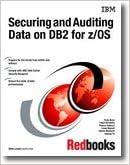Question
Use your company's cost of equity (from B.1) as the required return (or discount rate) to evaluate the following capital budgeting proposal for your company:
Use your company's cost of equity (from B.1) as the required return (or discount rate) to evaluate the following capital budgeting proposal for your company:
A proposal to build a $187 million factory is being contemplated to produce a new product. The factory is expected to last 20 years (but can be depreciated immediately according to current accounting rules). The factory is expected to produce 8000 units per year that are expected to be sold for a price of $26,000 each. Variable costs (production labor, raw materials, marketing, distribtuion, etc.) are expected to be $17,000 per unit. Fixed costs (administration, maintenance, repairs, utliities, insurance, real estate taxes, etc.) are expected to be $16 million per year. The tax rate is 21%. The project will require $24 million in inventory (raw materials and finished products) as well as $42 million in receivables (credit for customers). An extra $11 million in cash is required as a safety stock to provide financial flexibility (that enables avoiding running out of cash in case of temporary declines in demand). Suppliers (companies which sell the parts and raw materials that are used in the production of the 8000 units produced by the factory) are expected to provide short-term trade credit that is expected to sum to $17 million in accounts payable
Cost of equity= 4.688%
Compute equivalent annual cash flow (EAC) and compare that to another project with an annual EAC of $12 million that can alternatively be selected (and re-evaluatr the project in this context)
Step by Step Solution
There are 3 Steps involved in it
Step: 1

Get Instant Access to Expert-Tailored Solutions
See step-by-step solutions with expert insights and AI powered tools for academic success
Step: 2

Step: 3

Ace Your Homework with AI
Get the answers you need in no time with our AI-driven, step-by-step assistance
Get Started


